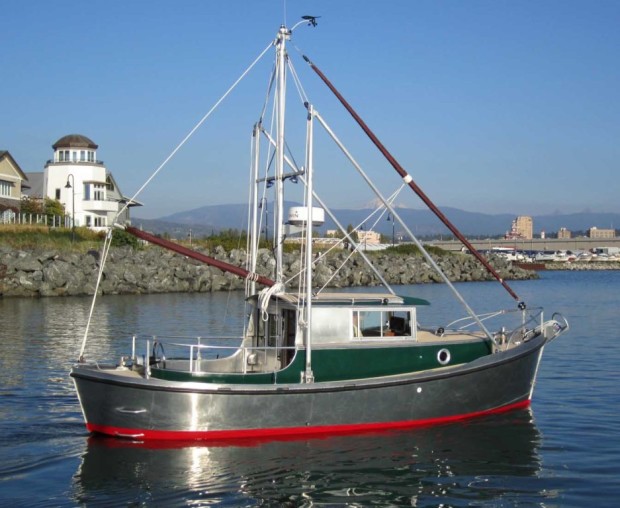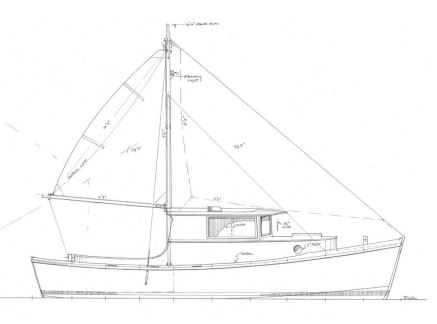TimberCoast 22
is the newest member of the BARTENDER family — a capable and efficient long range mini-cruiser.
Design by Tad Roberts N.A.
LOA: 21’- 10.5”
Draft: 2’- 5”
LWL: 20’- 2”
Displ: 3600 lbs
Beam: 7’- 4”
HP: 10 to 30
Download Details : TimberCoast 22
Plans:
$325.00Add to cart
Tad Roberts on hull form:
In shaping the hull of the TimberCoast 22 I kept the original Bartender form in mind but included additional criteria. While maintaining the seaworthiness of the older sibling, the new boat is to be more fuel efficient at low speed. She had to be visually similar to her older (and faster) sister, but I wanted the longest possible waterline to reduce wavemaking and form drag. She needed to be simple to build while being hydrodynamically suited to low speed efficiency. The final key operational requirement is excellent controllability at low speed, cruising, trolling, and maneuvering, without the flightiness of a planning hull. The TimberCoast incorporates shorter overhangs than the Bartender hulls, which increases waterline length.Her sheer and topside flair are similar to Bartenders, but her full length deep keel is a distinct departure. Her hull is veed throughout its length to place the engine and tanks low (mostly below WL). With the ability to cruise all summer on one tank of fuel, the Timbercoast is an open water capable mini distance cruiser.
One of the many industries in which the Calkins Bartenders have successfully served over the past fifty years is commercial fishing. Although originally designed to be fast planing boats, many Bartenders were loaded heavily and operated slowly and safely in rough sea conditions at displacement speeds while trolling for salmon. None are known to have been lost.
To refine this successful application and develop a true displacement vessel based on the Bartender we looked to Canadian naval architect Tad Roberts of Gabriola Island, BC. In the TimberCoast Troller Tad has created an exceptionally seaworthy small cruising vessel which will safely, comfortably,
and economically carry a small crew on an extended voyage. The pedigree of this capable and compact vessel boasts a strong combination of proven NW designs – the Bartender and the traditional salmon troller.
Power requirements for the TimberCoast are delightfully low. She’s designed for inboard power in the tradition of her workboat predecessors. She’ll slip along at economical displacement speeds burning ½ to ¾ gallons per hour with a diesel inboard of 10 to 30 hp. Efficiency and range can be maximized by utilizing the riding sail for off-wind motorsailing (foresail optional). A set of paravanes will provide a great deal of comfort when conditions deteriorate.
The TimberCoast is designed for plywood construction. The hull is sheathed in a protective layer of fiberglass cloth and epoxy resin. Construction plans consist of 10 very detailed hand drawn sheets and seven pages of construction notes with guidance on tools, materials, and build sequence. Also included are full-size prints for the frames, stem, and sternpost so lofting is not required.
The TimberCoast Troller is a safe and sensible option for those who prefer to cruise at a relaxed pace. We look forward to savoring every mile of a journey North along the lush timbered coasts of British Columbia and Alaska in our own TimberCoast 22… perhaps trolling a plug-cut herring while noodling over the charts with a warm mug in hand… ahh.


